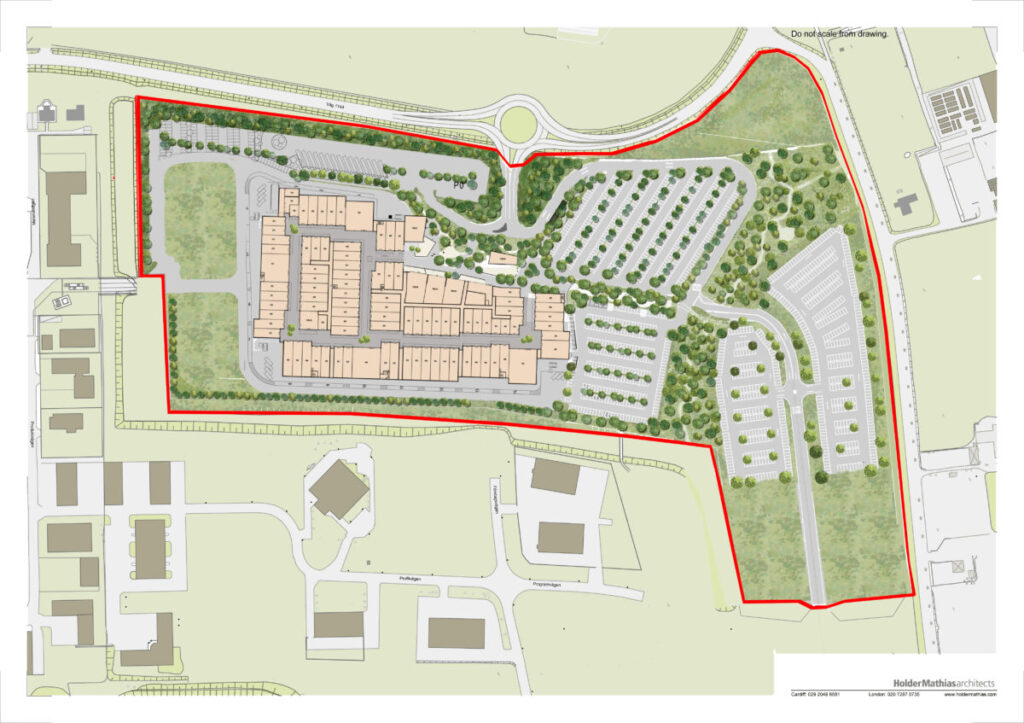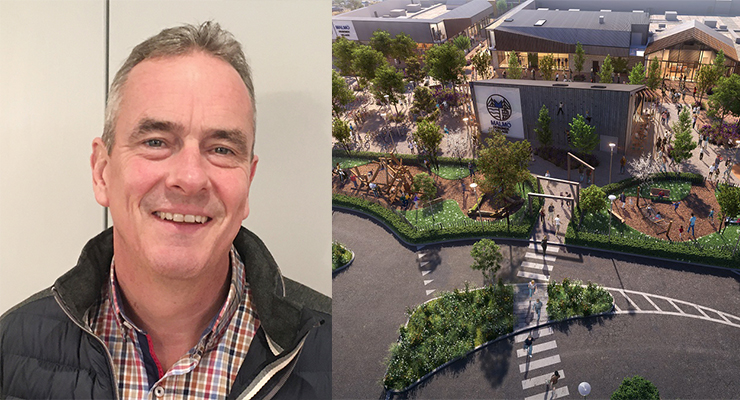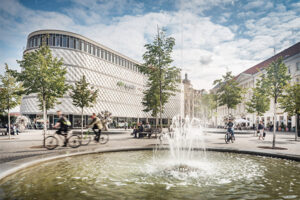By Giles Membrey
As things stand, sustainability, as retail brands view it, seems to revolve largely around the manufacturing process, recycling, and environmentally-friendly packaging – probably because those are things that are relatively simple for them to communicate, and easy for consumers to understand. However, if they want to be as sustainable as possible, there is so much more that they should be looking to embrace, particularly when it comes to outlet centers. Sustainability is widely acknowledged as having four main pillars – environmental, human, social, and economic – so, let us examine each of those areas in isolation and look at what is on offer for brands that really want to embrace sustainability.
Environmental
From an outlet perspective, this is probably the most important of the four pillars and has influenced Rioja Estates’ evolving approach to development. We have invested around 5.5 million euros in landscaping for our latest project, the Malmö Designer Village, which is significantly more than previous schemes. That is partly for aesthetic reasons, but it also enhances the customer experience – the walk from the car will be their first interaction with the development. We are also putting beehives on the roof, which might sound odd, but that is actually really important for the local eco-system. In addition, we are recycling rainwater, and putting a wormery in the service yard to turn food waste into compost, which we will then put onto the landscape. We also plan to reduce water consumption through super-efficient toilets.
Energy use related to heating is another big topic. At Malmö Designer Village we are installing ground source heat pumps that will provide low-energy heat directly to each unit via heat exchangers. That comes at an extra capital cost to us, but it significantly decreases the amount of money that brands need to invest in fit out, and simultaneously reduces energy use. For those outlets in which an open-door policy is in place and a “heat curtain” is required, anything that reduces the cost of heating is to be welcomed, because, as everyone is fully aware, energy is not getting any cheaper. The ground source system is powered by hidden solar panels on the 24,100-square-meter roof, creating further energy efficiencies.
We are also looking at ways to reduce the number and frequency of deliveries through better use of space. Aside from discontinued lines, we know that a considerable percentage of the products sold via branded outlets consists of returns – internet shopping has dramatically increased returns as people tend to buy more items than they plan on keeping. The returns from online channels are usually held at a central depository and sent to outlets via regular “top-up” deliveries, resulting in frequent vehicle deliveries and higher emissions. The lack of on-site storage space at most outlets means that the brands have little choice but to work in such a way. Malmö Designer Village will provide space above the units that will be available for storage and accessible via a freight elevator, to enable brands to store more stock on site, cut down on deliveries, and reduce vehicle emissions.
In recognition of a significant embedded carbon cost to the retail fit out itself, we have developed retail fit out guidelines that encourage retailers to consider the environmental impact of the way they use materials. It is one of the reasons that we, as landlords, provide standard shopfronts that can be retained when the brands change.

Human and Social
Much is made of enhancing the consumer experience, but what about the people who come to work at an outlet? At Malmö Designer Village, we are adding dedicated electric shuttle buses first thing in the morning and last thing at night – ensuring that they are timetabled to meet the trains arriving at the nearest station – in order to make it as easy as possible for employees to travel to and from work. That will reduce the number of car journeys being made and free up valuable parking spaces that might otherwise be taken up by employee cars. Staff retention is a real issue in retail, as it is in many sectors, so initiatives that support employees are essential for the future of retail.
Due to the fact that Malmö Designer Village is an outdoor center in a temperate climate, keeping people dry will be essential to the visitor experience. Therefore, we have introduced glass canopies over the walkways to take advantage of natural light. That will also allow lighting from the stores to illuminate the walkway, reducing the need for additional external lighting.
Many outlets are located along out-of-town highway junctions, which makes them readily accessible and prevents them from contributing to city-center congestion. The catchment area for outlets is much wider than traditional retail and can extend to approximately a 90-minute drive. Research by McArthurGlen shows that most people go to outlet centers in groups of two or three, unlike when they go to shopping centers or food stores. We are, therefore, looking at ways to encourage car sharing by providing convenient, designated parking for car share users.
Online and digital retail is well established, and retailers are responding to changing behavioral frameworks. However, merging digital platforms with physical stores has proven to be the most successful approach. That is in recognition of social interaction needs and the fact that certain products are better suited to physical interaction, such as getting clothing that fits.
Economic
There are many ways in which we are making the economic case for sustainable outlets – from positioning, design, and operational strategies. The original concept of outlets is sustainable in itself, in that it was conceived to allow the clearance of excess products in a way that provides the consumer with branded fashion at lower prices – enabling more people to afford branded goods – and does so in a way that is profitable for the brands, thereby sustaining both them as well as the economy.
In addition, the capital cost of land that outlets are built on, and the cost of the outlet buildings themselves, is considerably lower than that of shopping centers. At outlets, the expenditure is focused only on areas that visitors will come into contact with. Therefore, outlets can be said to be more economical.
There you have it: a brief overview of just some of the ways in which developers in general, and Rioja Estates in particular, are trying to drive the move towards more sustainable outlets. The big question, though, is whether brands are prepared to embrace such initiatives, particularly if they come at a cost to them? For example, while I am sure that most brands would agree that ground source heat pumps are a great idea from an environmental perspective, whether or not they will be prepared to accept a smaller contribution from the developer, given the fact that the fit-out costs will be lower, has yet to be determined. Will developers get better prices from investors due to an outlet’s enhanced sustainability credentials? It is probably too early to say right now, but the time when brands will need to decide how serious they are about sustainability is fast approaching.






